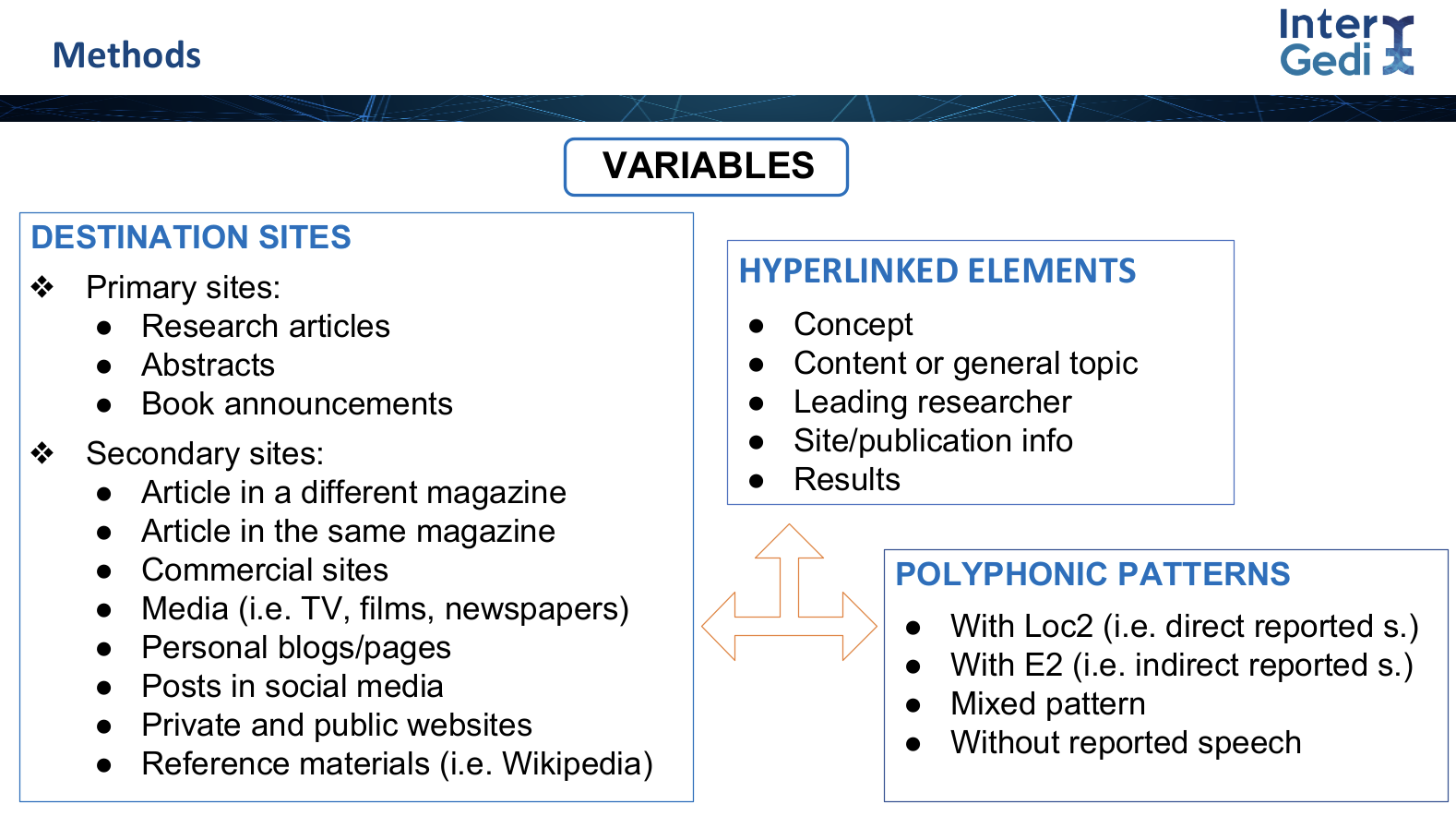AEDEAN 48: Rosa Lorés & Silvia Murillo explore recontextualisation in online feature articles

Our senior members Dr Rosa Lorés and Dr Silvia Murillo-Ornat participated in the 48th edition of the AEDEAN Conference, hosted by the Department of English Philology, German Philology and Translation and Interpretation at the University of the Basque Country (UPV/EHU). This year’s AEDEAN was celebrated between the 12th and the 14th of November 2025, in Vitoria-Gasteiz.
Their paper, entitled “Online feature articles as sites of recontextualization: The polyphonic role of reported speech and hyperlinks” centred on unpacking how polyphony was articulated in the online context of feature articles (FAs) disseminating specialised knowledge about health to expert–non-expert audiences. Through a mixed-methods analytical design, they discussed the systematic connections they found concerning the hyperlinked elements and the destination texts, and their implications with regard to the popularisation process.
You can find their abstract below:
Online feature articles as sites of recontextualization: The polyphonic role of reported speech and hyperlinks
The communication of science takes many forms, from traditional expert-authored academic works, like research papers and reviews, to popularizing practices, including social media platforms. Science journalists often act as mediators in this popularizing process, recontextualizing complex scientific information and bridging the gap between scientists and the general public. Recontextualizing processes involve taking content from other sources and integrating it into a new text, which can be interpreted as a “polylogue”, where different voices are interwoven.
The exploration of these voices in the text has been approached from the concept of “polyphony”, which goes back to Bakhtin (1984). Polyphony is related to discoursal phenomena such as intertextuality (cf. Faiclough 1992), reported speech (cf. Reyes 1994) and evidentiality (cf. Aikhenvald, 2004). As explained by Ducrot (1984), it entails the presence of a first locutor’s voice, which is combined with those of other locutors (responsible for direct reported speech utterances) and enunciators (responsible for indirect
reported speech). As Pontrandolfo and Piccioni (2022) point out, while polyphony has been analysed in academic discourse, science popularizations have not been widely studied from this perspective so far.
In science popularization, which currently takes place mainly on online platforms, the sources of those other voices are mostly digital: online research articles, blogs, personal websites, social media, etc. Online feature articles, the object of study in this proposal, do not escape this practice. Content from other texts is presented as part of direct and indirect quotations, often hyperlinked, so direct access is granted to other texts. By their very nature, hyperlinks highlight different parts of the text, and, from a polyphonic point of view, they can be said to be evidence of other voices.
Drawing on the notion of polyphony (Ducrot, 1984, Nølke, 2017) in this presentation we explore the following research questions:
1) Which elements of the digital texts under analysis tend to be hyperlinked and which are their destination texts? Is there any connection or pattern?
2) In which ways do the elements hyperlinked contribute to the recontextualization of specialized knowledge for less expert audiences?
For these purposes, a corpus of 30 scientific feature articles (Pascual and Sancho-Ortiz 2024) dealing with health topics and published in two digital magazines (Popular Science and The Smithsonian Magazine) has been explored through manual close readings and the qualitative and quantitative software NVivo. This mixed-methods approach reveals that the most frequent hyperlinked textual elements are the central topics of other articles or texts, concepts from sources that are key to the discussion, the general results of some previous research, and publication data of other sources (i.e. author, institution, journal, and title). In our view, there seem to be strategic connections between hyperlinked elements and destination texts that attend to issues of credibility and comprehensibility, two key factors in popularization processes. We fine-grain these general categories in a qualitative way, to further account for how writers manage the interaction between reported speech and hyperlinks, with the ultimate aim of bridging knowledge gaps in scientific knowledge between expert sources and lay audiences.
References
Aikhenvald, Alexandra Y. Evidentiality. Oxford University Press, 2004.
Bakhtin, Mikhail. Problems of Dostoevsky’s Poetics. Edited and translated by Caryl Emerson. University of Minnesota Press, 1984.
Fairclough, Norman. “Intertextuality in critical discourse analysis.” Linguistics and Education 4(3-4), 1992, 269-293.
Ducrot, Oswald. “Esquisse d’une théorie polyphonique de l’énonciation.” In Le Dire et le Dit, edited by O. Ducrot, Minuit, 1984, 171-233.
Nølke, Hennig. Linguistic Polyphony. The Scandinavian Approach: Scapoline (Studies in Pragmatics, 16). Brill, 2017.
Pascual, Daniel, and Ana E. Sancho-Ortiz. “Investigating recontextualisation processes in scientific digital practices: The SciDis Database.” Revista Electrónica de Lingüística Aplicada 23 (2024): 101-118. https://doi.org/10.58859/rael.v23i1.649
Pontrandolfo, Gianluca, and Sara Piccioni. Comunicación especializada y divulgación en la red: aproximaciones basadas en corpus. Routledge, 2022.
Reyes, Graciela. Los procedimientos de cita: citas encubiertas y ecos. Arco Libros, 1994.
